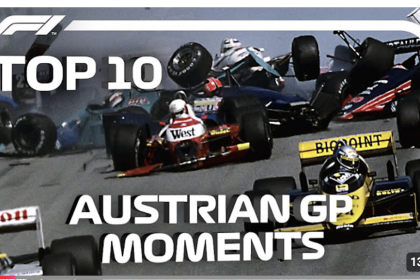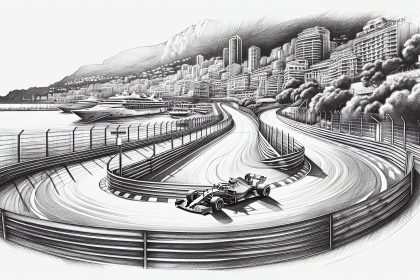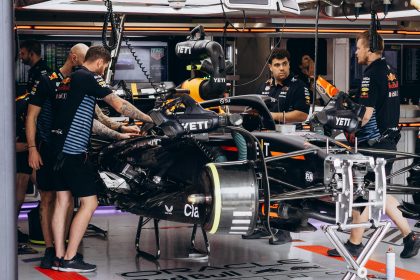The Pulse of Telemetry in Formula 1 Strategy
Okay, let’s get this out of the way: If you think Formula 1 is just about drivers with nerves of steel and cars that look like spaceships, you’re only seeing half the picture. The real magic? It’s invisible. It’s the data—millions of numbers, signals, and blips flying through the air at the speed of light, turning every race into a high-stakes chess match played by engineers, strategists, and, yes, a few caffeine-fueled data nerds in the back room. Welcome to the world of telemetry and data acquisition: the digital backbone of F1 strategy. Buckle up, because this is where the sport gets emotional, technical, and just a little bit wild. 🚀
- The Pulse of Telemetry in Formula 1 Strategy
- The Pulse of the Paddock: Why Telemetry Makes F1 More Than Just Racing
- From Gut Feeling to Gigabytes: A (Very) Brief History of F1 Telemetry
- The Real-Time Race: How Telemetry Turns Data Into Decisions
- The Undercut, the Overcut, and the Art of the Perfect Pit Stop
- The Cloud, the Factory, and the Rise of Remote Ops
- Security, Secrets, and the Dark Side of Data
- The Human Element: When Data Meets Instinct
- The Future: AI, Digital Twins, and the Next Frontier
- #fyp
The Pulse of the Paddock: Why Telemetry Makes F1 More Than Just Racing
Picture this: It’s Sunday, you’re on your third slice of pizza, and the race is about to start. But behind the scenes, every F1 car is already talking—sending a million data points per second from over 300 sensors straight to the pit wall and, thanks to cloud tech, all the way back to team HQ. That’s not just a stat, that’s the heartbeat of modern Formula 1.
Let’s be real: Without telemetry, F1 would still be stuck in the days of “the car feels a bit off, mate.” Now, engineers know if a tire is two degrees too hot, if the hybrid system is losing efficiency, or if a driver’s braking just cost them a tenth. It’s like having X-ray vision for racing.
Data is in our team’s blood. From developing cars to improving performance, selecting and analysing drivers is done through data analytics.
Christian Horner, CEO of Oracle Red Bull Racing
And trust me, when you’re a Red Bull fan like me, you know that every win is built on a mountain of data, not just Max Verstappen’s right foot.
From Gut Feeling to Gigabytes: A (Very) Brief History of F1 Telemetry
Let’s take a quick trip down memory lane. Back in the 1950s and 60s, F1 engineers relied on driver feedback and a stopwatch. Seriously. If you wanted to know why your car was slow, you asked the driver and hoped he remembered which corner felt weird.
Fast forward to the 1980s: Lotus and Williams start experimenting with early telemetry, sending basic engine data back to the pits. It was clunky, unreliable, and totally revolutionary. By the 1990s, real-time telemetry was standard, and teams could finally see what was happening under the bodywork—live.
Now? We’re talking terabytes of data per weekend, encrypted wireless streams, and remote ops centers analyzing every blip. The digital revolution didn’t just change F1; it redefined it.
With 300 sensors on each car, the amount of data generated each second is comparable to streaming an HD film. Over the course of a race, 1.5 terabytes of data is collected to analyse and optimise up to 4000 parameters, producing 100,000 data points — all of which are analysed to inform everything from car design to racing strategy.
The Real-Time Race: How Telemetry Turns Data Into Decisions
Here’s where it gets spicy. Every lap, every corner, every millisecond—data is streaming from the car to the pit wall. Tire degradation? Check. Brake temps? Check. GPS gaps to rivals? Double check. This isn’t just for show; it’s the lifeblood of strategy.
During a race, engineers track performance versus pre-race simulations, looking for deviations, opportunities, or red flags. If a tire starts to overheat, they know before the driver does. If the hybrid system is losing power, they can tweak settings on the fly. And when it’s time for a pit stop, the call is made based on real-time models, not just gut feeling.
Want to see how this works in action? Check out this deep dive from Mercedes AMG Petronas Motorsport on how they use RaceWatch for pre and post-event analysis: Watch on YouTube
During a race, teams analyze real-time data to make instant decisions that could mean the difference between winning and losing. This includes calling for pit stops at the optimal moment or adjusting race strategy in response to competitors’ moves or changes in weather conditions.
The Undercut, the Overcut, and the Art of the Perfect Pit Stop
Let’s talk tactics. The undercut—pitting early to get fresh tires and leapfrog a rival—is one of F1’s most famous moves. But when do you pull the trigger? That’s where telemetry shines.
Teams run thousands of simulations before the race, predicting tire wear, traffic, and even the probability of a safety car. Once the race starts, these models update in real time. If the data says the undercut will work, the call goes out: “Box, box!” (That’s F1-speak for “Pit now!”)
But it’s not just about numbers. Sometimes, the driver’s gut feeling overrides the data. That’s the magic of F1—humans and machines working together, sometimes arguing, always pushing the limit.
If you applied the technologies that were being used to win races five years ago, it’s not going to work. It’s a data-driven battlefield.
Ruth Buscombe-Divey, AWS motorsports ambassador
The Cloud, the Factory, and the Rise of Remote Ops
Here’s something that blows my mind every time: While the race is happening, there’s a whole second team back at the factory, watching the same data in real time. Thanks to cloud computing (shoutout to AWS and Oracle), engineers in the UK or Italy can support the pit wall in Barcelona, Singapore, or wherever the circus has landed this week.
This isn’t just cool—it’s essential. With terabytes of data and only seconds to make decisions, having a global brain trust means teams can react faster, smarter, and with more confidence than ever before.
F1 cars now produce 1.1 million data points per second. This colossal amount of information is streamed to AWS, where it is processed and analysed in real-time. Thereafter, each team receives all the data about their own two vehicles, but none concerning their rivals. This allows principals to make split-second decisions on everything from strategy and pit stops to energy deployment and tyre selection, all while the race is happening.
Security, Secrets, and the Dark Side of Data
Of course, with great data comes great responsibility (and a bit of paranoia). Telemetry is encrypted, firewalled, and guarded like the crown jewels. Why? Because if a rival team got access to your data, they’d know your secrets—fuel loads, tire strategies, even driver weaknesses.
And let’s not forget the cybersecurity angle. In a world where hackers can target anything, F1 teams invest millions in protecting their digital backbone. One breach could mean disaster, not just for the race, but for the entire season.
The real-time transmission of data over wireless networks renders F1 cars susceptible to cyberattacks. A compromised system could lead to disastrous consequences, including data theft, sabotage, or loss of competitive advantage.
The Human Element: When Data Meets Instinct
Here’s the thing: For all the tech, F1 is still about people. The best strategists know when to trust the numbers and when to go with their gut. The best drivers can feel things the sensors can’t measure—like a change in wind or a rival’s desperation.
That’s why, even in 2025, you’ll still see engineers sweating over laptops, drivers arguing over the radio, and fans (like me) screaming at the TV when a strategy call goes right—or horribly wrong.
Live telemetry drives live strategy calls — often within milliseconds. Strategy simulations: planning 50 laps ahead. Before the race even begins, teams run thousands of simulations — each predicting possible race paths based on tire choices, weather forecasts, safety car probability, traffic after pit stops, rival strategies.
The Future: AI, Digital Twins, and the Next Frontier
So, what’s next? AI-powered analytics, digital twins (virtual copies of the car for testing setups), and even more real-time fan engagement. Imagine watching a race and seeing the same data as the engineers—predicting pit stops, strategy shifts, and even overtakes before they happen.
F1 isn’t just keeping up with the future; it’s inventing it. And as a fan, it’s never been more exciting (or more complicated) to follow the sport.
#fyp
Want to dive deeper? Here are some must-see links and resources to keep your F1 data obsession going:
- How Data Analysis Transforms F1 Race Performance – Catapult
- The ‘data-driven battlefield’ powering change in Formula One – The National News
- Mercedes AMG Petronas Motorsport: RaceWatch Analysis (YouTube)
- From Data to Decision: How F1 Teams Turn Telemetry Into Strategy – Medium
- The Pinnacle of Connected Objects: Telemetry in Formula One and the Role of Cybersecurity – Riliantech
- How Data Works in Formula 1 – Racecar Engineering
- How Data is transforming Formula 1 and revolutionising the sport – LearningPeople
And that’s it, folks. Next time you watch a race, remember: Every overtake, every pit stop, every heartbreak is powered by a river of data you can’t see—but you can definitely feel. Now, if you’ll excuse me, I need to go explain to my girlfriend (again) why I’m yelling at a graph on my phone. #DataIsLife #F1Nerd #fyp











